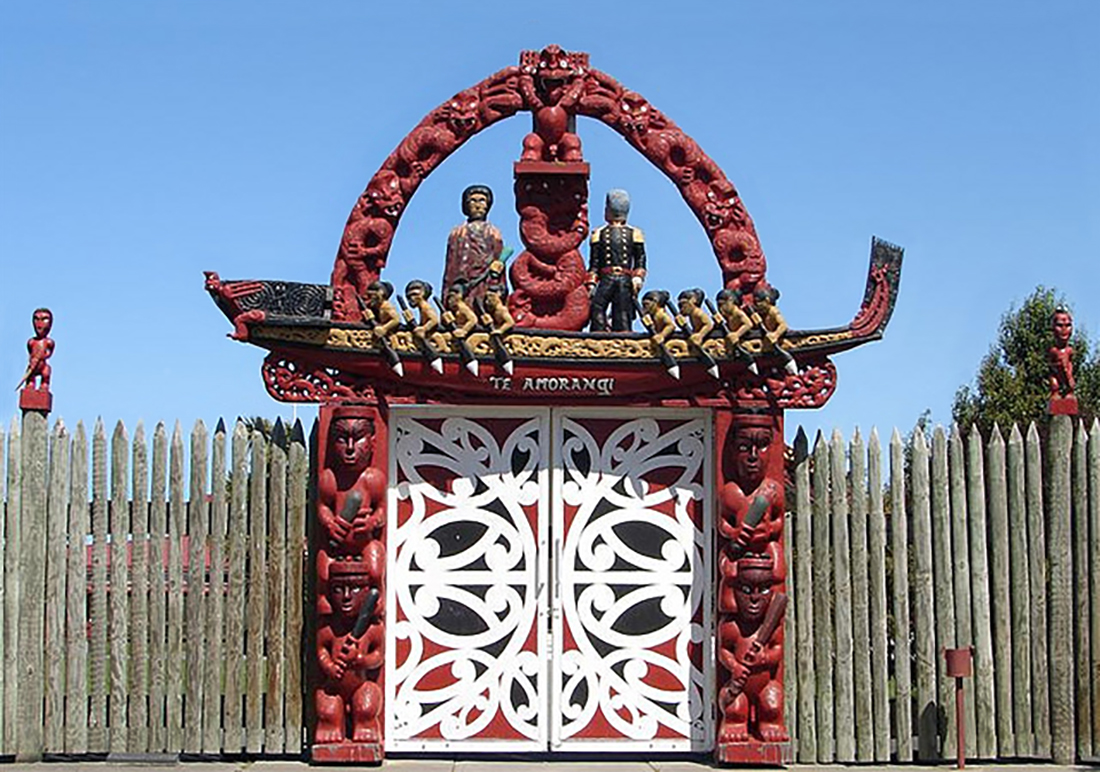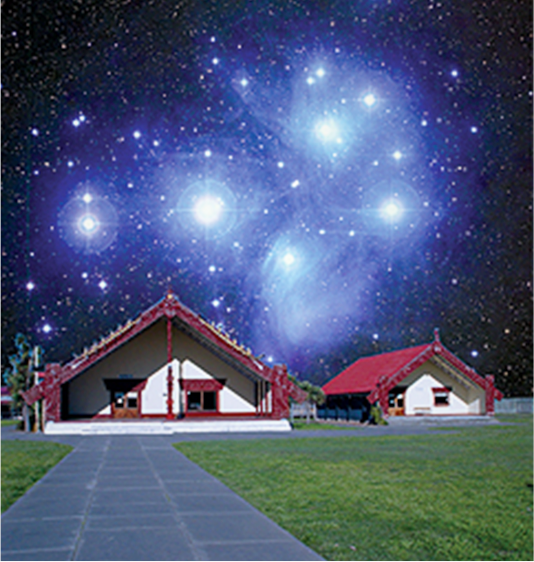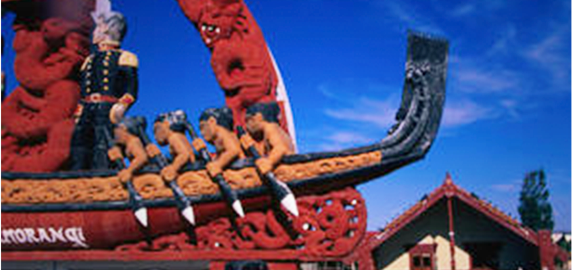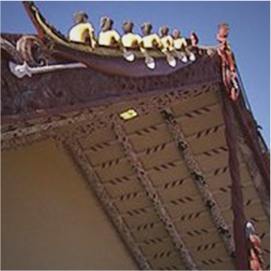Nga hau e wha National Marae
Te Runanga o Nga Maata Waka are the current guardians of the Nga Hau E Wha National Marae.
Its carvings depict the history of New Zealand, showing eight warriors paddling a canoe which is representative of all the ancestral canoes at Waitangi in 1840 and, opposite, Captain William Hobson, RN, Governor of New Zealand at that time. This entrance symbolises the Marae as a place for all citizens of New Zealand.
Nga Hau E Wha National Marae is situated on approximately 14 acres of land located in the eastern suburbs of Christchurch. It is the largest National Marae in New Zealand.
Acquiring the site
Nga Hau E Wha National Marae is situated on approximately 14 acres of land located in the eastern suburbs of Christchurch. It is the largest National Marae in New Zealand.
In 1848, members of Ngäi Tahu sold most of Canterbury to the New Zealand Company for 2,000 pounds and promises of reserves for present and future needs. When the sale of land was arranged Ngäi Tahu understood that in return for their land “…our places of residence and cultivation are to be kept for our own use, for the use of our children and for those who may follow after us… we leave to the Government the power and discretion of making us additional reserves of land.” Subsequent to this deal however no reserves were surveyed in Christchurch and Mäori cultivations and settlements were lost.
In 1858, the Canterbury Provincial Government granted Little North Hagley Park as a Mäori reserve provided a “…wood or shingle house was erected on the site.”
Historically this site was a resting place for Mäori travellers. Funds were not available and no building was erected.
In 1862, the Government notified that Little North Hagley Park was available for the Mäori to tether their horses rather than in Victoria Square. (Then Market Square). The Government wanted the site back in 1872 and agreed to find somewhere to replace it. It seems nowhere was found and subsequently confusion arose over the ownership of this land.
Efforts to find a suitable site for a National Marae in Christchurch continued over the years although a number of tribal and urban marae already exist in Canterbury. Finally in 1977, Mr Hamish Hay, the then mayor of Christchurch offered Cuthberts Green as the only possible site in Christchurch. The offer was accepted by certain Mäori representatives, but apparently not by Ngäi Tahu, the tangata whenua.
Marae establishment
The Council made a public announcement on the 23rd of September 1977 “…considering allocation of part of Cuthberts Green as a marae site.” A year later Ngä Hau E Whä Christchurch Marae Incorporated was established. The proposed marae siting was strongly opposed by the local community and 179 public objections were made to the proposal, all from residents of neighbouring properties. The matter went to the Planning Tribunal and in November 1979, the Council received and adopted the Commissioner’s recommendation and approved the application for the planning and consent for the establishment of a marae. The matter was then taken to the Court of Appeal, however the appellants lost and the marae was given the go ahead.
The clearing and levelling of the site continued through the P.E.P labour scheme and from 1981 to 1990 the complex was built. In May 1990 the Marae was officially opened.
Marae values
Kia möhiotia ake, he marae tënei mo:
- te whakatinana i te mana, i te wehi, i te möhiotanga, me te whakapakaritanga o ngä tängata katoa;
- ngä mahi tino pai me ngä mahi tohunga e mahiatia ana i runga i te ngäkau whakangahau, i te ngäkau pono, me te ngäkau tika;
- te tiaki pono i ngä taonga katoa;
- te häpai i ngä tikanga, i ngä ähuatanga pai o te whänau;
- te kotahitanga o ngä iwi katoa;
- te manaaki tängata;
- te kaha ki te mahi hou, te mahi kakama, me te mahi ngäkau tapatahi.
To be recognised for:
- fostering dignity through respect, recognition and development of all people;
- excellence and professionalism through leadership by example, achievement and accountability;
- preservation of all things that are treasured;
- promotion of family values;
- actively practising unity;
- a commitment to hospitality, and
- demonstrating innovation, initiative and integrity.
The mission
Kia whakapakari i te ngäkau möhio o ia iwi o te ao, i raro i te tikanga Mäori, kia whakatinana, ä, kia whakapümau hoki i te whakaaro kotahi mo ngä tikanga, ngä whanaungatanga, me ngä mahi whai ora a ngä tangata katoa.
To enhance understanding between all people, embracing Mäori values, so as to establish and maintain a major focal point for cultural, social and economic development.
Canterbury earthquakes
Many business, organisations and whanau were displaced in the Canterbury earthquake of February 2011. Nga Hau E Wha National Marae has been host to a variety of organisations since this time.
Read about the full list of agencies we host.









